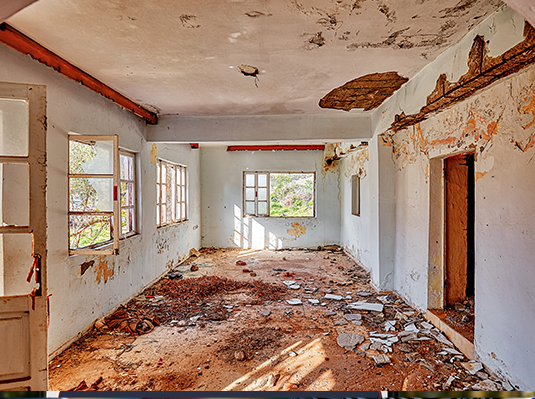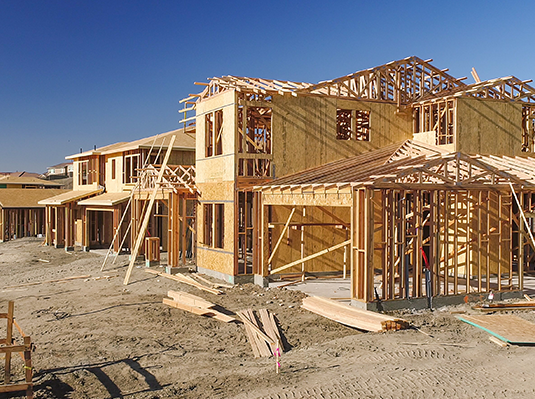
If your living room catches fire and you lose your furniture and electronics, your homeowners insurance will pay for that, but how much money will actually get? A policy that covers actual cash value (ACV) might not pay much at all, which can be upsetting when you are looking at a check that only covers a fraction of what you need to buy new furniture. This is why it is important to understand the difference between replacement cost coverage and actual cash value coverage.
What is the difference between replacement cost and actual cash value?
An ACV policy covers your items based on their current market value, taking depreciation into account. For example, if you have an LCD TV that you bought for $2,700 six years ago, an ACV policy might only pay $50 on a claim. The same way you can’t expect to sell an eight-year-old car for the same amount you paid for it, your expensive LCD TV loses value every year, too.
A replacement cost policy would consider how much it costs to replace your TV with the same model (or as close to the same model as you can currently buy) and use that to determine how much you would be paid if you filed a claim. You might not get the same $2,700 you originally spent, especially if newer models of the same TV have gone down in price over time, but you would be given enough to purchase a replacement television.
Your insurance company will determine the replacement cost and actual cash value of every item you have included in your claim, whether that is a small ticket item, like a pair of shoes, or a big expense, such as a new roof.
How is actual cash value determined by insurance companies?
Actual cash value is determined by subtracting depreciation from replacement cost. This means your insurance company will do the math to determine what it would cost to buy a new version of the item and how much value your item still held when it was destroyed to find out exactly how much to pay out for a claim.
For example, if you bought a couch 12 years ago for $1,000 and it was destroyed by a covered peril, your insurance company would do the research to find out how much the same couch would cost today. The insurance company would then look at their data to determine the useful life of a couch and calculate the depreciation based on that number. Then they plug that information into a basic formula:
ACV = Replacement Cost x Useful Life Remaining
In our example above, if they found that replacing the couch would cost $1,500 and that the useful life of a couch was 24 years, they would plug those numbers into the formula to determine the actual cash value of your couch was $750.
Depending on the item in question and how long you owned it, you may find yourself receiving only a tiny fraction of what it would cost to replace your property.
This process is all based on internal data that your insurance company has compiled. If you come across a situation where you think the ACV payment you received was too low, you can check with your insurance carrier for more information about their actual cash value depreciation guide.
What is a sublimit and how does it impact my insurance?
Sublimits are limitations in an insurance policy's coverage that place a maximum benefit on the amount you can receive when filing a claim. Many parts of your insurance policy come with a maximum value based on a sublimit of your dwelling coverage.
- Other structures coverage: Usually set at 10% of the replacement cost of your home.
- Personal property coverage: Usually set somewhere between 20% and 50% of the replacement cost of your home.
- Loss of use coverage: This is usually set somewhere between 10% and 20% of the replacement cost of your home.
- Personal liability coverage: This coverage isn’t set as a sublimit, typically the minimum liability coverage on a homeowners policy is $100,000.
- Medical coverage: This coverage isn’t set as a sublimit, it is usually somewhere between $1,000 and $10,000, depending on state laws.
Which is better, replacement cost or actual cash value?
Generally speaking, replacement cost is better than ACV coverage. If you suffer a total loss because of a massive disaster like a fire or wind damage, the last thing you want to deal with is being handed a check that won’t cover the cost of replacing your property.
It is also important to note that whether you choose replacement cost or ACV, impacts more than just your personal property coverage. Choosing a replacement cost policy for your home is recommended. You don’t want to be stuck trying to replace a collapsed roof or rebuild a home with a check based on actual cash value.
However, replacement cost is more expensive than an ACV policy. If cost is a concern you may want to reach out to one of our experts at Goosehead Insurance to help you find the best, most affordable policy for you.
What is blanket coverage?
Blanket coverage is insurance that covers multiple things all under one policy. Homeowners insurance is an excellent example of blanket coverage because it offers multiple coverages (dwelling, personal property, other structures, etc.) for items at the same location.
The term blanket coverage is also used to describe one type of coverage that applies across multiple locations. For example, someone who owns a chain of restaurants might have all their restaurants covered under one blanket policy.
The contents of this article are for informational purposes only. You should not act or refrain from acting based on this information without first consulting a Goosehead licensed agent at [email protected]. We disclaim all liability for actions taken or not taken by you based on the contents of this article which is provided "as is." Goosehead makes no representation that this content is error-free.


